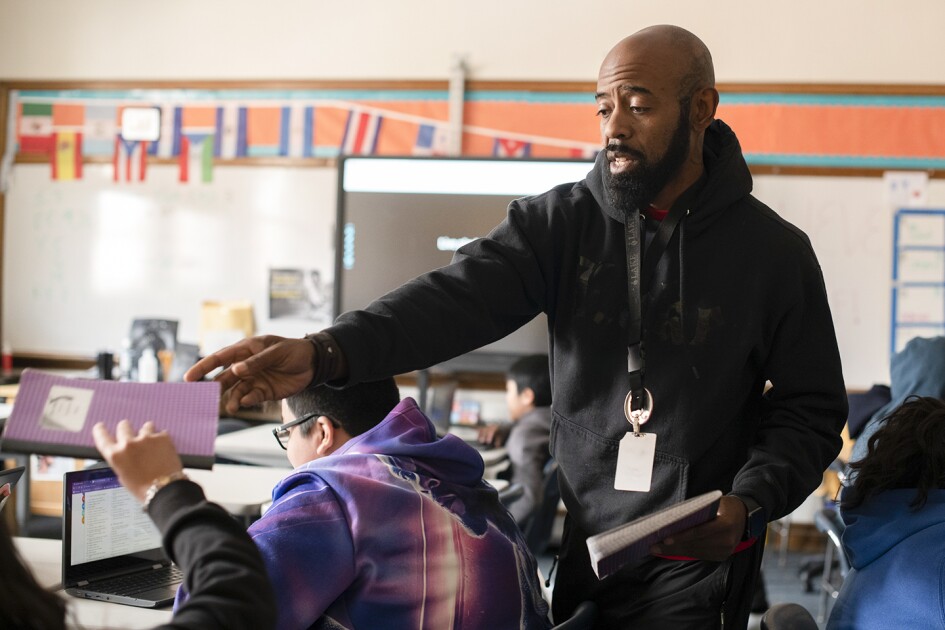Corrected: An earlier version of this story misidentified Harvard University economist Roland G. Fryer Jr.
Reward programs have a long tradition in classrooms—think of gold stars and perfect attendance certificates—but direct-incentive programs have had lackluster effects on improving student achievement. New research on student motivation suggests that the timing and format of several high-profile programs may explain some of their inconsistency.
The new findings come in a working paper published this summer by the National Bureau of Economic Research. A team of researchers from the University of Chicago, the University of California, San Diego, and the Center for European Economic Research in Mannheim, Germany, conducted a series of six experiments in three low-performing Chicago-area school districts: the 3,000-student districts of Bloom Township and Chicago Heights, and the 400,000-student Chicago public schools. Steven D. Levitt, a University of Chicago economist and the author of the 2009 William Morrow book Super Freakonomics, led the study.
From 2009 to 2011, the researchers repeatedly scheduled low-stakes diagnostic tests of students in elementary and middle school as well as 10th graders. They were not told about the potential reward until just before the second test; the researchers measured the incentives’ effect on students’ test-taking, not their long-term effort in learning the material.
Some students were promised no reward; others, a trophy, $10, or $20 in cash given either immediately or a month afterward.
The team found younger students could be wooed by a trophy as easily as by money, but for older students, researchers only saw improvement with cold, hard cash.
Risk of Loss Motivated
Moreover, the rewards worked much better if they were given before the test, not after. In these cases, a researcher gave the students the trophy (for younger ones) or the money (for older ones) and asked them to sign a form saying they had received it and to write briefly about what they would do with it.
“It was interesting because it wasn’t that they worked harder because they desperately needed the money, but more that there was mental accounting going on,” said Sally Sadoff, a co-author of the study and an assistant professor of management and strategy at UC-San Diego.
Researchers found students worked significantly harder to keep what they had than they did to win something new. They outperformed students working to earn cash or a trophy by as much as .17 of a standard deviation. In this context, that meant the improvement had as great an effect as cutting class size by a third or greatly increasing the quality of the teacher, according to the study.
“People value something more when they have it already and they are at risk of losing it than when they don’t have it yet and it’s something to gain,” Ms. Sadoff said.“The trophy is something they can hold in their hands; it made it more salient.”
Boys were more easily prodded to greater effort through the incentives than girls were, though girls tended to outperform boys in both grades and on low-stakes exams.
“Boys will try on a test when there’s a stake for them,” Ms. Sadoff said.
Timing Is Critical
But none of the incentives worked at any age if students knew they wouldn’t get the reward for a month. “All motivating power of the incentives vanishes when rewards are handed out with a delay,” the researchers concluded.
Prior research has shown that all people value rewards less the longer they have to wait for them, and children and teenagers are even more impatient. “Especially among children, the difference between right now and tomorrow is a big difference,” Ms. Sadoff said. “For all students it’s important that the reward be immediate.”
That impatience creates a massive problem for incentive programs based on state test results, which can often take months to turn around.
“The incentives for education in general are really long-delayed,” Ms. Sadoff said. “The returns come often after a student graduates, which is really long in the future for most of these students.”
Rewarding Inputs
This tendency may help to explain the very mixed results in a comprehensive study of four separate incentive programs conducted by Harvard University economist Roland G. Fryer Jr. In that 2011 study, Mr. Fryer found paying students to improve on standardized tests had no effect, but paying students to read related books and take quizzes on them significantly improved their performance on later tests. Mr. Fryer did not return requests for comment.
Alexandra M. Usher, a senior research assistant at the Washington-based Center on Education Policy, said the findings echo the nonprofit think tank’s own study on student motivation. “It’s really important to reward inputs, not outputs,” Ms. Usher said. “It’s important to reward behavior that kids can control, rather than just telling them to get better grades.”
The findings may also suggest that policymakers should consider small-scale incentive programs rather than a large overarching program, Ms. Usher said. “It would be difficult to do a big federal policy that puts into place an incentive program everywhere,” she said. “So much of the program’s effectiveness depends on how well it’s tailored to a specific population. So much depends on how well you implement the program and how well you design it.”
Ms. Sadoff said she and her colleagues are now studying whether it may be more effective to allow teachers to choose two students each week to be awarded the money to both tailor the incentives better and shorten the time between action and reward.








